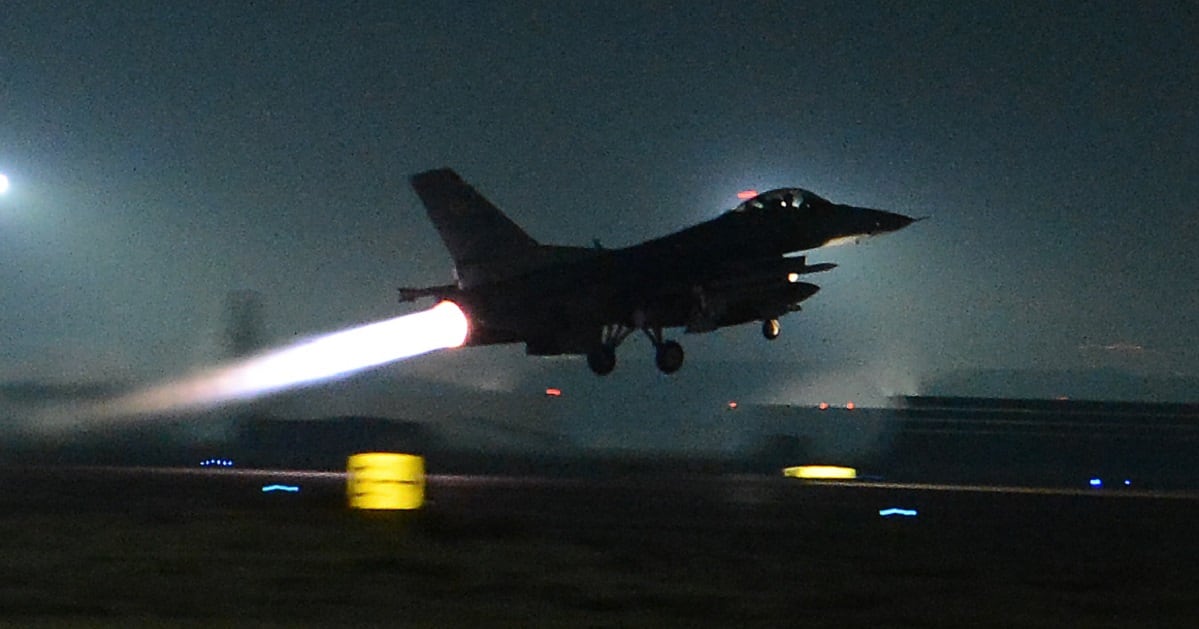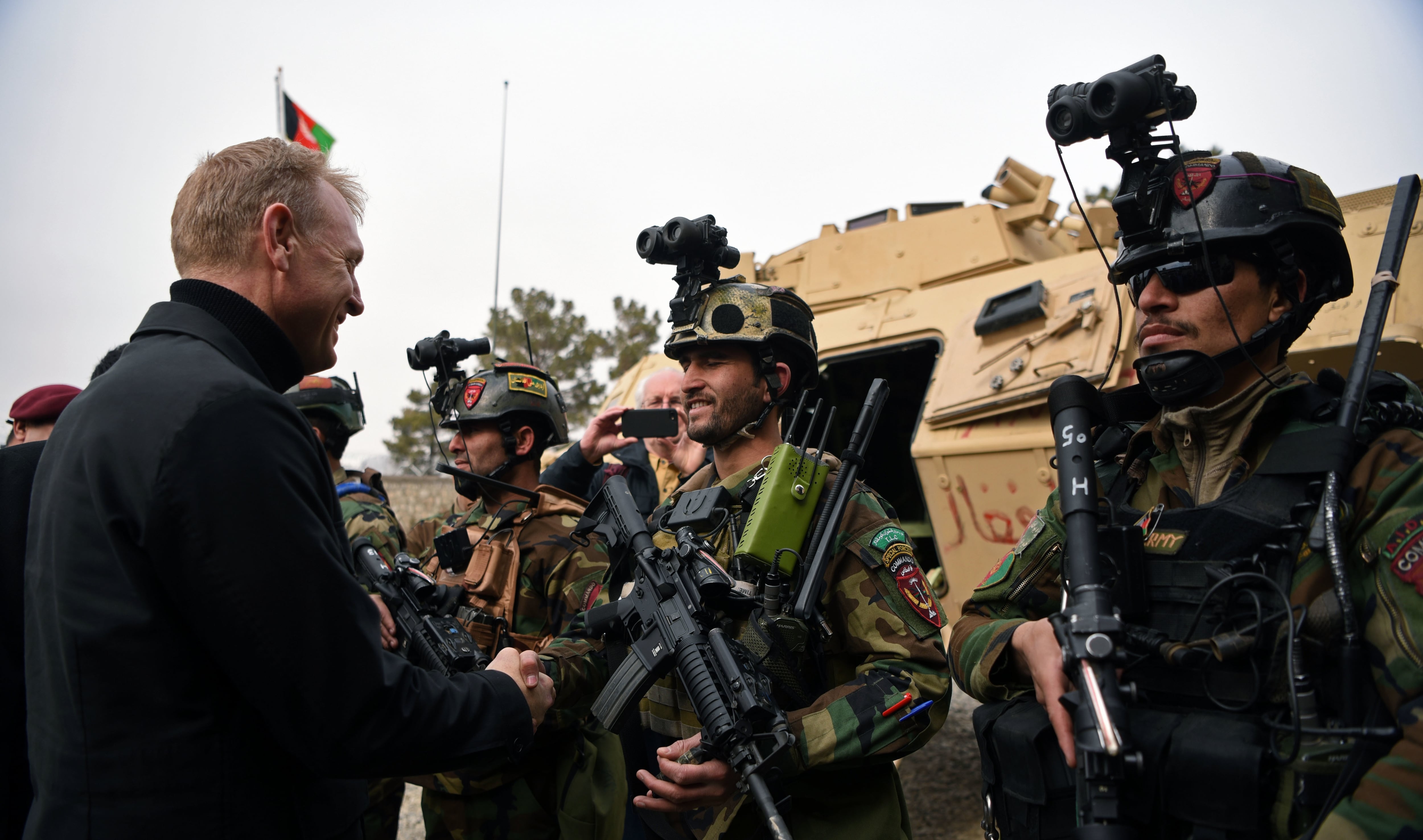The war in Afghanistan is getting harder to track for the American public, as U.S. military officials there have decided to no longer report how much of the country is controlled or influenced by the Taliban or other insurgent forces, according to oversight officials.
The change marks an important waypoint for the U.S. mission.
Rather than compile subjective metrics detailing how much of the country and population the Afghan government controls, the focus is instead on concluding the war on terms favorable to Afghanistan and the United States, military officials said. Critics, however, contend that the change is the result of so much of Afghanistan still being controlled by insurgents.
U.S. diplomats want to implement a cease-fire and negotiate a peace settlement based on the current map and territory controlled. The Taliban, meanwhile, have announced their annual spring offensive. The insurgent group is poised to continue seeking leverage.
While district control data did not on its own indicate the success or failure of the U.S. mission, it did contribute to an overall understanding of the war there, which has cost more than 2,400 U.S. lives and trillions of dollars.
Resolute Support — the U.S.-led NATO mission that began in 2015 — has not collected district stability data since October. Defense Department officials called the data “redundant” and said it “did little to serve our mission" in comments made to Military Times.
Special Inspector General for Afghanistan Reconstruction John F. Sopko criticized the change after his office tried to acquire the data for its quarterly report that came out Wednesday and was provided in advance to Military Times.
“The Afghan people know which districts are controlled by the Taliban. The Taliban obviously know which districts they control. Our military knows it. Everybody in Afghanistan knows," Sopko said. "The only people who don’t know what’s going on are the people who are paying for all of this and that’s the American taxpayer.”
Sopko leads SIGAR, the U.S. government watchdog that provides independent oversight of the war.
Previously, SIGAR reported district-stability assessments made by Resolute Support’s regional commanders. The assessments compared Afghan government control and influence to that of the insurgency over the population in each district and the districts themselves.
Those assessments will no longer be provided because they are “redundant and did little to serve our mission of protecting our citizens and allies," said Army Col. Dave Butler, U.S. Forces-Afghanistan spokesman.
Less than two years ago, the previous commander of Resolute Support held up the data as an important metric of success, stating that it was his goal to increase Afghan government control over the country’s population to 80 percent. That number was last reported to be at about 63 percent, though some independent analysts say the situation is worse.
FDD’s Long War Journal maintains a “living map” of Afghan district control utilizing open-source information, to include SIGAR’s reports. Their map estimates that 48 percent of the Afghan population lives in territory controlled by the government.
“When data shows a trend that is contrary to a desired narrative, the military, like most bureaucracies, seeks to suppress it,” said Bill Roggio, senior fellow at the Foundation for Defense of Democracies and Long War Journal editor.
There are no other products that communicate district stability or control information, U.S. military officials told SIGAR in March, according to the quarterly report.
Butler said Tuesday, however, that the “intelligence community produces a district stability assessment which is available to SIGAR.”
That report is likely classified, and Philip J. LaVelle, SIGAR’s public affairs director, said his office was not provided it.
“SIGAR has always gotten the district assessments from the RS command, not the intelligence community,” LaVelle said. "When RS provided their written responses to our data call on this issue, they made no mention of it being discontinued because it’s ‘redundant’ and no mention of it being made available to us from the intelligence community. "
Regardless, Resolute Support’s change comes as it works to set the conditions for a peace settlement with the Taliban, currently being negotiated by American diplomats.
“Our mission here is in defense of our country, we are focused on setting the conditions for a political settlement to safeguard our national interests," Butler said.
Sopko told reporters that the change is part of a larger trend that puts the American public in the dark during peace negotiations — one of the most pivotal points in the conflict.
"Almost every indicia, metric for success or failure is now classified or nonexistent,” he said.
This quarter, U.S. military officials also classified a narrative assessment about Afghan Special Security Forces misuse by the Afghan Ministry of Defense and Ministry of Interior.
Other metrics remain classified or not releasable based on Afghan government wishes, including Afghan security force casualties, reports on anti-corruption efforts and the exact methodology used by the Pentagon to calculate revenue denied to the insurgency as a result of air strikes against financing operations.
RELATED

Resolute Support justified its decision to no longer collect district control data by saying insurgent influence is “not indicative of effectiveness of the South Asia strategy or of progress toward security and stability in Afghanistan, particularly in the wake of the appointment of U.S. Special Representative for Afghanistan Reconciliation Zalmay Khalilzad."
Khalilzad is currently leading the U.S. delegation in talks with Taliban leadership to negotiate an end to the almost 18-year-long conflict.
Despite the ongoing peace negotiations, the Taliban still announced the onset of its annual spring offensive this month.
“The Taliban say ‘a ceasefire is not part of the agenda.’ For us, peace is the agenda," Khalilzad said over publicly last week. “I challenge Talibs to join other Afghans and work to make this the year of peace.”
SIGAR’s report recognized the limitations of district assessments, including subjectivity from regional commanders. However, Resolute Support told SIGAR in May 2017 that the district-control assessments were being “methodologically improved” by making them more subjective, basing them on regional commanders’ informed opinions about the control status of districts within their area of responsibility.
Senior U.S. military officials have also previously held up the data as an important measure of success.

“Over the next two years the Afghan Security Forces will expand their control of the population to 80 percent,” Gen. John Nicholson Jr., then-commander of Resolute Support and U.S. Forces-Afghanistan, said in November 2017.
That increase hasn’t occurred. It’s therefore no surprise that the U.S. military decided to end the assessments, said Roggio.
“While Resolute Support and U.S. Forces-Afghanistan heralded success over the past four years, the district data showed a steady, gradual decline in security as the Taliban has grown stronger,” he said.
“It got harder and harder for the military to push its message, so the information has been buried. The American public, Congress and policy makers now have less information to understand the complex situation," Roggio added. "Congress should exercise its oversight of the U.S. military and demand this information be provided.”
FDD’s Long War Journal, which Roggio edits, does not maintain an “influenced” assessment for Afghan districts as SIGAR does, and instead considers the influenced districts to be contested. The reasoning is that if the Taliban have influence in a district, then neither the government nor the Taliban fully control it.
Despite the limitations inherent in the district control data, including subjective reporting and different ways of defining data points, it was the only metric provided by Resolute Support that consistently tracked changes to the security situation on the ground.
The last set of district-stability data was from October 2018. That information was provided to Congress in SIGAR’s January 2019 quarterly report.
Kyle Rempfer was an editor and reporter who has covered combat operations, criminal cases, foreign military assistance and training accidents. Before entering journalism, Kyle served in U.S. Air Force Special Tactics and deployed in 2014 to Paktika Province, Afghanistan, and Baghdad, Iraq.





